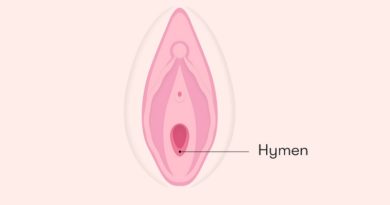Induced Abortion: Reasons, Pros and Cons, Complications, and How to Manage Them
Induced abortion is a medical procedure that terminates a pregnancy. Also, it’s known as medical abortion, which is the deliberate termination of pregnancy either by taking medication or by a surgical procedure. The decision to have an abortion is a difficult one, and it is important to understand everything about it. In the article, we will discuss why someone might choose to have an abortion, its types, the pros and cons, the complications, and how to manage them.
Reasons for Induced Abortion
There are many reasons why someone might choose to have an induced abortion. Some of the most common reasons include:
- Unwanted Pregnancy
An unintended, unplanned, or unwanted pregnancy can be a big challenge for some individuals if they are not prepared to have a child. It occurs when a woman becomes pregnant without intending to do so, due to contraceptive failure, or not using contraception.
This may result in difficult decisions about whether to continue the pregnancy or terminate it. Unwanted pregnancy is more common among young adults who may not have access to proper education, resources, or support. - Fetal Abnormalities
If a fetus is diagnosed with severe abnormalities that will likely result in a stillbirth or short life expectancy, some individuals may choose to terminate the pregnancy. - Financial Difficulties
The cost of raising a child can be high, and some individuals may feel that they cannot afford to have a child at this time. - Health Concerns
In some cases, a woman’s health may be at risk if she continues the pregnancy. In these cases, a doctor may recommend an induced abortion.
Types of induced abortion
There are two main types of induced abortion: medical and surgical.
1- Medical abortion
It involves taking medications to end a pregnancy, which is usually done within the first 10 weeks of pregnancy. It is done by taking two different medications, mifepristone, and misoprostol (Cytotec tablets), which cause the uterus to contract and expel the pregnancy. It’s a safe and effective option for many women, but it requires close follow-up with a doctor to ensure that the abortion is complete and there are no complications.
2- Surgical abortion
It’s a procedure to remove the pregnancy from the uterus done by a surgeon. There are several different types of surgical abortion, depending on the stage of pregnancy and the woman’s medical history.
– In the first trimester, suction aspiration is the most common method, which involves using a small tube to suction the pregnancy from the uterus.
– In the second trimester, dilation and evacuation (D&E) may be done using instruments and suction to remove the pregnancy. In rare cases, late-term abortion may be necessary if there are serious medical complications for the woman or fetus.
Pros and Cons of Induced Abortion
Like any medical procedure, there are pros and cons. Some of the advantages of having include:
- Control over Reproductive Health
Induced abortion gives individuals control over their reproductive life and allows them to make decisions about their own bodies. - Reduced Risk of Complications
Compared to other types of abortion, this type of abortion, under professional medical observation, has a lower risk of complications. - Less Painful
This type of abortion is generally less painful than other types of abortion, such as inevitable or surgical abortion.
On the other hand, some of the disadvantages include:
- Emotional Impact
Having an abortion can result in emotional stress, where individuals may experience feelings of sadness, guilt, shame, or regret. - Social and religious Stigma
In some societies, there is still a social and religious stigma associated with having an induced abortion. It is illegal in some countries like the Philippines. - Risk of Complications
The risk of complications is lower than with other types of abortion, but there are still some side effects such as cramping, bleeding, and infection.
Complications
Like any medical procedure, there are potential complications associated with induced abortion. Some of the most common complications include:
- Heavy Bleeding
Heavy bleeding can occur and can be dangerous if not treated promptly. - Infection
There is a risk of infection associated with any medical procedure. - Retained Tissue, incomplete abortion
Sometimes, tissue from the pregnancy is not completely removed during the procedure, which can lead to complications such as bleeding and infection.
Managing Complications
For any complications after an abortion, it is important to seek medical help right away. There are some recommendations, depending on the type and severity of the complication, including:
- Medication
Medication can be used to manage complications such as heavy bleeding, infection or pain. - Surgery
In some complications such as incomplete abortion or severe bleeding, surgery may be necessary to correct the issue. - Follow-Up Care
After an induced abortion, it is important to follow up with your doctor to ensure that you are healing properly and to address any concerns you may have.
SUMMARY
Induced abortion is a medical procedure of two types: medical and surgical. It can have both advantages and disadvantages. Understanding the reasons, pros, and cons, complications, and how to manage them is very important so that you can make the correct decision. If you have any questions or concerns about induced, don’t hesitate to contact us.
For more reading, click here: Pregnancy and abortion Archives – Helal Medical



